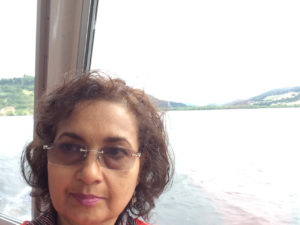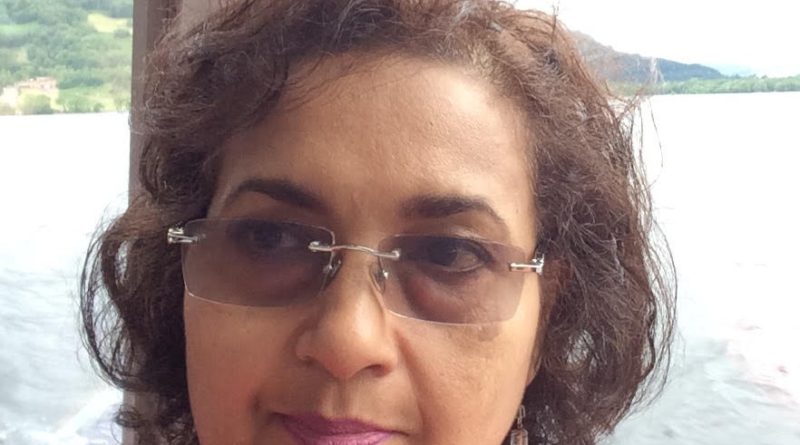Gender Justice by Jesslyn Ramlal
Gender justice is simultaneously a baseline human right, a simple human need, as well as a complex, multifaceted issue that unearths deep-seated needs and deficiencies in our shared human experience. It thus has far-reaching repercussions for the ways in which human beings live out their experience within the boundaries of human society.
The bulk of advocacy for gender justice has been intertwined with and has overlapped the struggle for what has come to be known as ‘women’s rights’. As such, it is sometimes relegated to being considered a strain of ‘feminism’,often with accompanying negative assumptions. Nevertheless, the focus on addressing the ubiquitous inequalities related to women remains a necessary thrust of gender justice. More recently however, writings, programmes, theoretical and scholarly initiatives and the like, reveal a growing awareness of the breadth of the term ‘gender’. They therefore reflect a more consciously inclusive outlook, whereby the understanding of gender is expanded to include: persons whose sexual orientations are not heteronormative, and those whose gender identities differ from the accepted binary male/female designations. This thinking represents a significant shift from traditional concepts of gender as biologically determined to the cultural determinism of radical feminism, the performativity thesis, and the multiple identity theory which negates the existence of a category known as ‘women’. What this means is that gender justice has come of age. It has evolved into an inclusive envelopment of the need for, and action geared towards, a fullness of fairness and equity towards all, regardless of how they identify themselves, and who they are.
As is to be expected, the encompassing nature and expansive dimensions of the gender justice paradigm as outlined above carries within it the potential for controversy, and this adds to the complexity surrounding gender justice. The inclusion of LGBTQIA persons is one of the areas that does not guarantee universal acceptance, and therefore has evoked a gamut of reactions and accusations of invalidity against the gender justice movement. In other words, while ‘male’ and ‘female’ are universally accepted as gender denominations, accepting the range of gender identities does not hold true for many who tend to adopt a more conservative approach to gender. In this regard, the issue of conservatism, especially as it is linked to religion, impacts upon the dispensation of gender justice, as widely-known violations of gender justice in such settings, some of which are referred to here, denote. Scriptural denouncements of non-heteronormativity, as in the Old Testament of the Christian Bible (Leviticus 18:22, 19:19,20:13; Deuteronomy 22:5) also contribute to the barrier to non-binary acceptance and inclusion under the umbrella of gender justice.
It is to be noted, however, that while, according to a 2013 Pew Research Center survey, faith groups have remained for the most part unaccepting of LGBTQIA persons – Islam (84%), the Mormon Church (83%), the Catholic Church (79%) and evangelical Churches (73%) – inroads into acceptance and inclusion have been made at various levels. For example, the Presbyterian Church (U.S.A.) removed barriers to transgender people being ordained in 2010, and the American Pentecostal denomination Assemblies of God and the Lutheran Church -Missouri Synod, also in the USA, have made a commitment to provide pastoral care for transgender people.
The complexity of gender justice is also rooted in intersectionality. It extends to unconscionable areas of human experience such as rape and gender-based violence, female genital mutilation, female foeticide and infanticide, human trafficking, intimate partner abuse, racial injustice, immigrant injustice, and forced/child marriage. Sadly, some of these realities have been shown to be embedded in cultural norms. For example, sex selective abortions, neonate killing/female infanticide abound in several parts of India, and transcend all castes, classes and communities, and even the North South dichotomy (Tandon and Sharma, 2006). Further, and unbelievably and unacceptably so, according to one writer, in India female infanticide satisfies important family, economic and societal needs (Hom, 2001)!
In another relevant example, statistics collated by UNICEF indicate that female genital mutilation (FGM) of various levels of brutality is consistently undergone by women in thirty (30) countries in western and north-eastern Africa, including Somalia (with the highest percentage/prevalence, of 98%), Egypt (also 98%, but dropping after a 1920 campaign against the practice), Guinea, Sierra Leone, Gambia, Mauritania, Mali, Ethiopia, Burkina Faso, and Sudan.
Rape and sexual assault in all its forms continue to be perpetrated upon women, men, and non-binary persons across all cultures and national borders. Rape is even documented as a perennial weapon of war.
The spectre of racism also continues unabated in the twenty-first century, across a range of cultures. Recent events in the USA have led to it being highlighted as a key area of targeting the black male, even as the history of European colonialism and its accessory, African enslavement, have shown their devastating effects on individual men and women, and the societies they inhabit/ed alike.
The presence of fundamentalist Islamic belief and practice in various countries (for example Saudi Arabia, Afghanistan, Sudan, Algeria, Pakistan) and how this has led to oppression of women is well-documented. The world has witnessed with horror the spectre of reactionary ‘honour killings’ of women by brothers, fathers, or other male relatives.
These and other horrific realities of contemporary life call aloud for gender justice to be established as a norm across national and cultural divides.
Gender justice ought to be the goal of a civil and civilised society, one that is committed to fairness and equity. As an essential component, it continues to exert an impact upon the study of diverse disciplines and fields: psychology, theology, and law, among others. We in the Caribbean would do well to give it due significance from both secular and faith-based perspectives. In this regard, in a scholarly article entitled “Gender, Equality, Justice and Caribbean Realities: The Way Forward” presented at the Caribbean Association of Judicial Officers (CAJO) 3rd Biennial Conference in September 2013, Justice Tracy Robinson recounts two diverse incidents that speak to how gender justice in the Caribbean has been approached.
One is a historically true incident, which occurred at the beginning of the nineteenth century involving the trial of the then governor of Trinidad, Thomas Picton, on a charge of torture of a free mulatto woman, Luisa Calderon. Picton had ordered that Calderon be tortured by a method known as picqueting, whereby she was bound and lowered for over two hours, on separate occasions, onto a wooden spike until she confessed. Picton’s trial for this terrible act of torture ended with a special verdict declaring that torture was legal at the time under Spanish law…
The second case Robinson relates occurred in 1998. Entitled Gooderidge, it involved an appeal made in the law court of St. Vincent & the Grenadines by a convict of indecent assault upon the six-year old daughter of his common-law wife. The convict was appealing his two-year sentence for the horrendous act on the grounds of unreasonable delay in the proceedings. Chief Justice Byron, in delivering his verdict dismissed the appeal, citing the international commitments made by SVG to protect girl children against domestic violence and sexual abuse, and declaring that both the society and the complainant (the six-year old child who had been abused) “had an important interest in the prosecution of her case”. Robinson concludes: “the Chief Justice took a familiar conception of justice – of fairness – to see and recognise the six year old girl.”
In the closing book of the New Testament, Revelation, we find these words:
“and there shall be no more death, neither sorrow, nor crying, neither shall there be any more pain…” (Rev. 21: 4, KJV)
If we start by seeing and recognising those who are most vulnerable to what is the absence of gender justice – gender inequality, inequity and injustice – we would have accomplished much, for while we mortals cannot eradicate death, we would have done our part to contribute to a world where there is no longer any sorrow, crying,or pain.
 Jesslyn Ramlal is an elder of the Presbyterian Church of Trinidad & Tobago. She is a retired secondary school principal. She is also a writer and a passionate seeker of justice. She is eagerly learning about gender justice, and is working in a small way to see it realized in her community.
Jesslyn Ramlal is an elder of the Presbyterian Church of Trinidad & Tobago. She is a retired secondary school principal. She is also a writer and a passionate seeker of justice. She is eagerly learning about gender justice, and is working in a small way to see it realized in her community.

